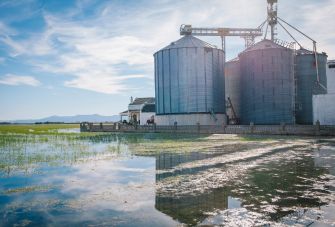Effluent Treatment For Rice Mills
Rice milling operations consume a significant amount of water and generate wastewater rich in organic matter, husk residues, oils, and other impurities. If untreated, this effluent can adversely affect the environment. As per regulatory norms, proper Effluent Treatment Plants (ETPs) must be installed to treat and safely dispose of this wastewater.
At Hydro Water Industries, we provide efficient, reliable, and cost-effective ETPs specially designed for the rice milling industry. Our systems ensure that treated water meets the discharge standards set by the Pollution Control Board (PCB), while also making it suitable for reuse in non-potable applications such as gardening and floor washing.

Wastewater and Treated Water Characteristics
| SN | Items | Description | Before Treatment | After Treatment |
|---|---|---|---|---|
| 1 | Temperature | 25°C to 35°C | Not to exceed 5°C above ambient | |
| 2 | Colour | Light yellowish | Colourless | |
| 3 | Odour | Present (light) | Nil | |
| 4 | pH | NA | 6.5 to 8 | |
| 5 | TSS | NA | <30 mg/l | |
| 6 | Oil and Grease | NA | <10 mg/l | |
| 7 | BOD | NA | <30 mg/l | |
| 8 | COD | NA | <150 mg/l |
Note: As BOD load is evenly distributed in daily discharge, no separate BOD removal stage is suggested.
Treatment Process Overview
Effluent from all sources is collected in an underground equalization tank for homogenization.
It passes through a bar screen chamber and oil & grease trap.
Air agitation is provided to ensure even mixing.
Effluent is pumped to a flash mixer where coagulants and chemicals are dosed automatically.
Agitation in dosing tanks and flash mixer ensures proper chemical reaction.
The mixed effluent flows into a clari-flocculator tank.
Flocculant chemicals are added to promote formation of sludge flocs.
Clarification is achieved via inclined tube settlers with PVC tubes set at 60°.
Sludge settles at the bottom and is sent to drying beds or a filter press.
Dried sludge cakes are disposed of at PCB-designated landfill sites.
Partially treated water flows into a treated water holding tank (TWHT).
Water is further treated using:
Dual Media Filter (DMF) – for suspended solids removal.
Activated Carbon Filter (ACF) – for colour and odour removal.
The final treated water can be safely discharged or reused for horticulture and utility applications.
Scope of Supply
A. Primary Treatment Section
| Item | Quantity |
|---|---|
| Bar Screen | 01 No. |
| Effluent Transfer Pump | 01 No. |
| Air Blower | 01 No. |
| Aeration Grids | 01 Lot |
| Packaged Treatment Unit | 01 Set |
| Chemical Dosing Systems | 03 Sets |
| Filter Feed Tank | 01 No. |
B. Secondary Treatment Section
| Item | Quantity |
|---|---|
| Filter Feed Pump | 01 No. |
| Dual Media Filter (DMF) | 01 No. |
| Activated Carbon Filter (ACF) | 01 No. |
| Filter Feed Tank | 01 No. |
| Chlorine Dosing System | 01 Set |
C. Other Items
| Item | Quantity |
|---|---|
| Piping and Instrumentation | As per P&ID |
| Treated Water Storage Tanks | 02 Nos. |
| Transfer Pump (1.5 HP) | 02 Nos. |
| Transfer Pump (7.5 HP) | 01 No. |
| Control Panel & Internal Cabling | 01 Lot |
Salient Features
Wastewater originates from pre-treatment rinsing stages, which operates as a continuous flow system.
Below-ground installation of bar screen chamber, oil & grease trap, and tanks helps save valuable floor space.
Above-ground tanks are constructed from MSEP for durability and longevity.
Treated water is suitable for toilet flushing, floor washing, and greenbelt irrigation.
Sludge is dewatered and disposed of at designated landfills as per PCB guidelines.
The plant’s operational scope begins at effluent inlet and ends at treated water outlet.
Electricity and tap water for plant operation to be arranged by the client.
Hydro Water Industries will provide an internal sampling report. Third-party testing can be arranged at an additional cost.
Enquiry Number
+91 93690-75730
hydrowaterindustries@gmail.com
Address
Kh. No.608/1, Asaudha, Balaji Industrial Area Bahadurgarh, Haryana
